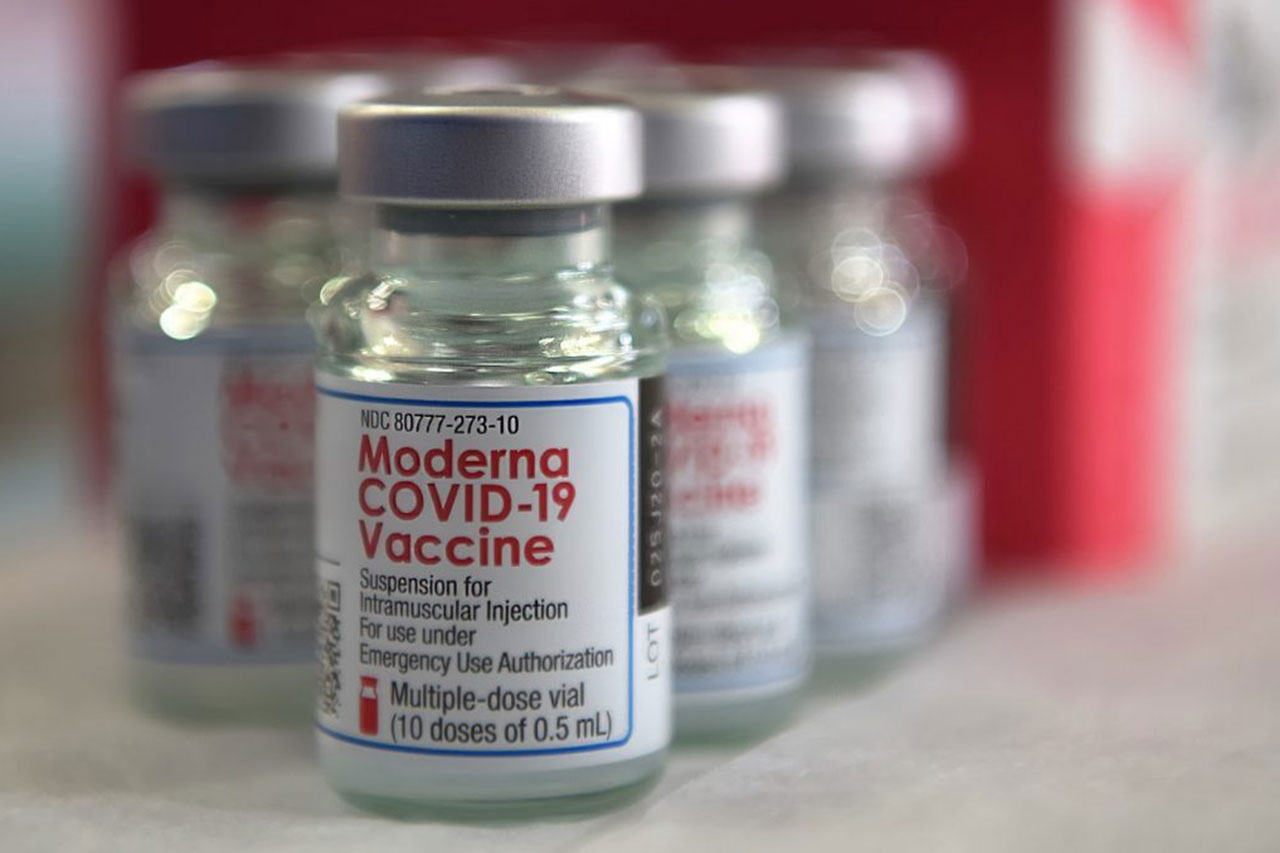
Sixteen months since the COVID-19 vaccination drive began and a third of the world’s population hasn’t yet received a single dose of the vaccine. A shocking 83 percent of all Africans are in the same boat, said the head of the World Health Organization (WHO) on 30 March.
Meanwhile last week the total number of COVID-19 cases worldwide had risen to 509,418,071 and the total deaths 6,217,596
The total vaccine doses administered stood at 11,236,923,250.
///
Despite its low vaccination rate, Africa is experiencing its longest-running decline in COVID-19 infections since the onset of the pandemic.
This is according to the WHO (Africa), which said weekly cases have fallen for the past 16 weeks, while deaths have dropped for the past eight.
Infections– largely due to the Omicron-driven fourth pandemic wave – have tanked from a peak of over 308 000 cases weekly at the start of the year to less than 20 000 in the week ending on April 10.
This low level of infection has not been seen since April 2020 in the early stages of the pandemic in Africa.
And in sharp contrast, the world’s tightest lockdown in China’s largest city has failed to contain a COVID-19 spurt. With the lockdown into its fourth week, Shanghai had 51 deaths on Sunday, not alarming by many standards elsewhere but anathema to the “zero COVID” fanatics running the country.
Chinese internet users rallied to outwit government censors on a video documenting weeks of lockdown in Shanghai, flooding social media feeds as frustration continued to escalate over strict COVID-zero rules. The six-minute video titled “The Sound of April” was posted on Friday and soon got censored as it went viral. Chinese WeChat users then uploaded the film from different accounts and in various forms including upside-down and mirrored versions until late night, as newly-uploaded clips were also removed. The film, on a slowly-moving frame of overhead shots of the city in black-and-white, spliced in sound clips from government press briefings, voice call recordings seeking medical help and information transparency, hungry and frustrated residents chanting in unison for government rations, and chats between neighbours and ordinary people helping each other out.
Meanwhile, onward to China’s capital Beijing where the “zero zealots” have begun frantically locking down suburban clusters even as cases mount.
//////
A Japanese Health Ministry committee said last Monday that it has approved Novavax Inc’s COVID-19 vaccine, setting the stage for full approval of the country’s fourth shot for the coronavirus, according to a Reuters report.
The Japanese government has agreed to purchase 150 million doses of Novavax’s recombinant-protein vaccine, which is to be manufactured domestically by Takeda Pharmaceutical Co.
Most of Japan’s COVID vaccinations have been carried out with the mRNA types made by Pfizer Inc and Moderna Inc. Astrazeneca Plc’s shot has also been approved, but most domestically produced supplies have not been used in Japan and instead donated overseas.
////
The rapid development of vaccines against COVID-19 has been a triumph of science, with more than half the world’s population inoculated since vaccines first became available in late 2020. But that triumph has not been shared equally around the world, with only 15 percent of people in low-income countries receiving even a single vaccine dose by late March 2022. www.medscape.com/viewarticle/972385?uac=398271FG&faf=1&sso=true&impID=4182547&src=mkm_ret_220424_mscpmrk_COVID-ous_int)
One reason for this imbalance is that the mRNA vaccines that have been so successful in wealthy nations are novel, expensive and technologically challenging to produce. Only a few companies have the expertise to manufacture them and high-income countries have hoarded more than 70 percent of doses.
Efforts to ramp up production of mRNA vaccines in middle- and low-income countries are now underway, including in some African countries. But mRNA is fragile and tricky to handle, requiring some vaccines to be stored at ultra-cold temperatures. This adds to the complexity of vaccine manufacture and to the challenges in distribution in remote areas. Vaccines that use genetically modified viruses to introduce coronavirus proteins, like the Johnson & Johnson vaccine, are also relatively new and technically challenging to produce.
A better option is to turn to more traditional vaccine technologies that don’t require as much new infrastructure, says Maria Elena Bottazzi, a vaccine researcher at Baylor College of Medicine in Houston. Bottazzi co-authored a look at Covid-19 vaccines that use more accessible technologies in the 2022 Annual Review of Medicine. Such vaccines deliver whole, inactivated viruses or fragments of viral protein to stimulate the immune system to produce antibodies, and they can be more than 90 percent effective at preventing disease, just like the mRNA vaccines.
Unlike mRNA technology, factories already exist in many middle- and low-income countries to produce these older types of vaccines, which include the familiar hepatitis A and B and polio vaccines. Such shots also tend to cost less than the new mRNA vaccines: a few dollars a dose, compared to more than $10 per dose. In partnership with the Indian company Biological E, Bottazzi and her Baylor colleague and co-author Peter Hotez have developed one such COVID-19 vaccine, Corbevax, using protein fragments, which is now licensed for use in India and Botswana.
///
A long-delayed assessment of the health effects of formaldehyde has concluded that the widely used chemical poses a greater cancer risk than had been estimated, which could lead to greater regulation. Most people are exposed to formaldehyde in airborne emissions from the glue in treated plywood and particle board used in buildings. A draft assessment 12 years ago by the US Environmental Protection Agency (EPA) that linked formaldehyde exposure to an increased risk of leukaemia and other cancers drew objections from members of the US Congress and industry representatives, who maintain that products containing formaldehyde are safe. The new draft, released last week, finds a higher risk of myeloid leukaemia. In an unusual step, it will be reviewed by the National Academies of Sciences, Engineering, and Medicine, which 11 years ago criticized EPA for not clearly presenting its methods in the earlier assessment. If the agency formally classifies formaldehyde as a carcinogen, EPA could tighten restrictions on its use under the Toxic Substances Control Act.
///
Doctors and scientists have developed an Artificial Intelligence (AI) tool that can accurately predict how likely tumours are to grow back in cancer patients after they have undergone treatment. www.theguardian.com/society/2022/apr/23/cancer-ai-tool-predicts-tumour-regrowth?
The breakthrough, described as “exciting” by clinical oncologists, could revolutionise the surveillance of patients. While treatment advances in recent years have boosted survival chances, there remains a risk that the disease might come back.
Monitoring patients after treatment is vital to ensuring any cancer recurrence is acted on urgently. Currently, however, doctors tend to have to rely on traditional methods, including ones focused on the original amount and spread of cancer, to predict how a patient might fare in future.
Now a world-first study by the Royal Marsden NHS Foundation Trust, the Institute of Cancer Research, London, and Imperial College London has identified a model using machine-learning – a type of AI – that can predict the risk of cancer coming back, and do it better than existing methods.
“This is an important step forward in being able to use AI to understand which patients are at highest risk of cancer recurrence, and to detect this relapse sooner so that re-treatment can be more effective,” said Dr Richard Lee, a consultant physician in respiratory medicine and early diagnosis at the Royal Marsden NHS Foundation Trust.
Lee, the chief investigator of the OCTAPUS-AI study, told the Guardian it could prove vital in not only improving outcomes for cancer patients, but alleviating their fears, with relapse “a key source of anxiety” for many. “We hope to push boundaries to improve the care of cancer patients, to help them live longer, and reduce the impact the disease has on their lives.”
////
Lalita Panicker is Consulting Editor, Views, Hindustan Times, New Delhi

